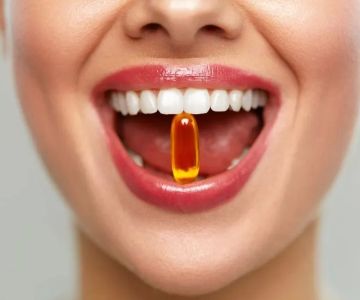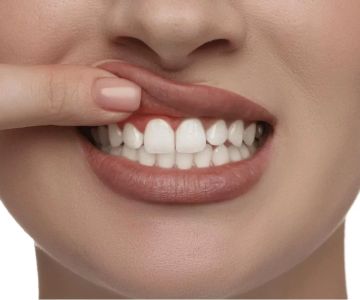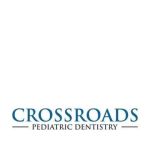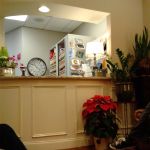Can a Patient with a Tracheostomy Eat an Oral Diet? Understanding the Challenges and Solutions
For individuals with a tracheostomy, the ability to eat an oral diet may be a significant concern. A tracheostomy is a medical procedure in which an opening is made in the neck to allow direct access to the windpipe, often due to respiratory issues or difficulty breathing. While a tracheostomy can help patients breathe, it may also complicate their ability to safely eat and swallow food. Understanding the relationship between a tracheostomy and oral feeding is essential for patients, caregivers, and healthcare providers to ensure the best care and outcomes.
1. What is a Tracheostomy?
A tracheostomy involves surgically creating a hole in the trachea, or windpipe, to facilitate breathing. The opening is typically secured with a tube called a tracheostomy tube, which helps air flow directly into the lungs. This procedure is often used for patients who have difficulty breathing due to conditions like chronic obstructive pulmonary disease (COPD), severe asthma, stroke, or trauma.
The tracheostomy tube can either be temporary or permanent, depending on the underlying condition. For those who have long-term tracheostomies, managing the airway and overall health becomes a critical part of their daily care routine.
2. Can a Tracheostomy Patient Eat an Oral Diet?
The question of whether a patient with a tracheostomy can eat an oral diet depends on several factors, including the patient’s overall health, the condition that necessitated the tracheostomy, and the patient’s ability to safely swallow food. In many cases, individuals with a tracheostomy can eat orally, but precautions must be taken to ensure that they do not aspirate food or liquids into the lungs.
Aspiration occurs when food or liquid enters the airway and can cause choking, pneumonia, or other respiratory infections. For patients with a tracheostomy, the risk of aspiration is heightened due to the altered anatomy of their airway. However, with appropriate medical supervision and adaptations, most tracheostomy patients can enjoy a regular diet.
3. The Role of Swallowing Therapy
One of the most crucial aspects of safely eating an oral diet with a tracheostomy is swallowing therapy. A speech-language pathologist (SLP) specializing in swallowing disorders is often involved in the care of these patients. The SLP works with the patient to assess swallowing function, monitor safety, and help patients regain the ability to swallow safely.
Before reintroducing oral feeding, a comprehensive assessment may be conducted, including:
- Swallowing tests: These tests, such as a videofluoroscopic swallow study (VFSS), can help assess whether the patient is at risk of aspiration when eating.
- Positioning adjustments: Modifying the way the patient sits during eating or using specialized equipment may help reduce the risk of aspiration.
- Consistency of food: The SLP may recommend modifying the texture of food, such as pureeing or thickening liquids, to make swallowing safer.
4. Airway Management During Eating
For patients with a tracheostomy, managing the airway during meals is essential. Some individuals may require specific strategies to ensure their airway is protected while eating. For example, certain tracheostomy patients may need to temporarily remove their tracheostomy tube or use a speaking valve, which helps redirect airflow into the upper airway and prevents aspiration. These interventions help maintain the safety and comfort of the patient while eating.
Additionally, the healthcare team will often recommend the use of a humidifier to keep the airway moist, as a dry airway can make swallowing more difficult and uncomfortable. These considerations are important to ensure that the patient can eat safely without compromising their respiratory health.
5. Potential Challenges with Oral Feeding
There are several challenges that tracheostomy patients may face when trying to eat an oral diet:
- Risk of Aspiration: As mentioned earlier, aspiration is a primary concern. For individuals with a tracheostomy, food or liquids may accidentally enter the airway, which can lead to severe respiratory complications such as pneumonia.
- Reduced Sensation: Patients with a tracheostomy may experience reduced sensation in their throat, making it more difficult to sense food entering the wrong part of the airway.
- Difficulty Coordinating Breathing and Swallowing: The presence of a tracheostomy tube can interfere with the normal coordination of breathing and swallowing. Some patients may need extra time or support to manage these activities.
- Dry Mouth and Throat: The tracheostomy tube can lead to dryness in the mouth and throat, making it harder for the patient to swallow food and liquids. Saliva production may also be affected.
6. How to Make Oral Eating Safer for Tracheostomy Patients
There are several strategies and modifications that can make eating safer for patients with a tracheostomy. These include:
- Thickening Liquids: For patients with difficulty swallowing thin liquids, thickening agents can be added to ensure safer swallowing.
- Small Bites and Sips: It’s important to encourage small bites and sips to reduce the likelihood of choking or aspiration.
- Frequent Pauses: Patients may need to pause frequently to clear their airway and ensure that they are not choking or aspirating.
- Proper Seating and Positioning: Patients should be seated upright while eating to reduce the risk of aspiration and to facilitate better swallowing.
7. Nutritional Support and Alternatives
In some cases, patients with a tracheostomy may require alternative feeding methods if oral eating is not safe or feasible. Enteral feeding (through a tube) is one option. This type of feeding can help patients receive the necessary nutrients without the risk of aspiration. Some individuals may alternate between oral and enteral feeding based on their abilities and condition.
Working with a nutritionist or dietitian can help ensure that the patient is receiving adequate nutrition while keeping their safety in mind. A balanced, nutrient-dense diet is essential for recovery and maintaining good health, especially for individuals with complex medical needs.
8. How to Support a Tracheostomy Patient’s Oral Feeding Journey
Caring for a patient with a tracheostomy requires a combination of medical expertise, patience, and support. Caregivers play a vital role in helping the patient adjust to oral feeding and ensuring that they adhere to safety guidelines. Communication between caregivers, doctors, speech therapists, and dietitians is key to optimizing care and ensuring the patient’s well-being.
Emotional support is also crucial. Patients may feel frustrated or discouraged by the challenges of eating after a tracheostomy, but with the right care and encouragement, many can regain the ability to enjoy meals safely. A positive outlook and active participation in rehabilitation can help patients make progress toward a healthier lifestyle.







 Amber L. Pearson, DDS3.0 (2 review)
Amber L. Pearson, DDS3.0 (2 review) BayView Dental Arts4.0 (964 review)
BayView Dental Arts4.0 (964 review) Crossroads Pediatric Dentistry0.0 (0 review)
Crossroads Pediatric Dentistry0.0 (0 review) Dr. Marvin R. Winter, DDS5.0 (9 review)
Dr. Marvin R. Winter, DDS5.0 (9 review) Affordable Dentures & Implants4.0 (778 review)
Affordable Dentures & Implants4.0 (778 review) Falmouth Dental Health5.0 (353 review)
Falmouth Dental Health5.0 (353 review) The Importance of Oral Health Education During Pregnancy for a Healthy Pregnancy
The Importance of Oral Health Education During Pregnancy for a Healthy Pregnancy Best Tips for Brushing Your Teeth Properly for Healthy Gums: Essential Techniques for Oral Health
Best Tips for Brushing Your Teeth Properly for Healthy Gums: Essential Techniques for Oral Health Why Skipping Dental Checkups Can Lead to Bigger Oral Health Problems
Why Skipping Dental Checkups Can Lead to Bigger Oral Health Problems Advantages of Porcelain Dental Restorations
Advantages of Porcelain Dental Restorations How Can Diabetes Cause Tooth and Gum Problems? Preventing and Managing Oral Health Issues
How Can Diabetes Cause Tooth and Gum Problems? Preventing and Managing Oral Health Issues Healthy Habits for Promoting Good Oral Health and Hygiene: Tips for a Healthy Smile
Healthy Habits for Promoting Good Oral Health and Hygiene: Tips for a Healthy Smile